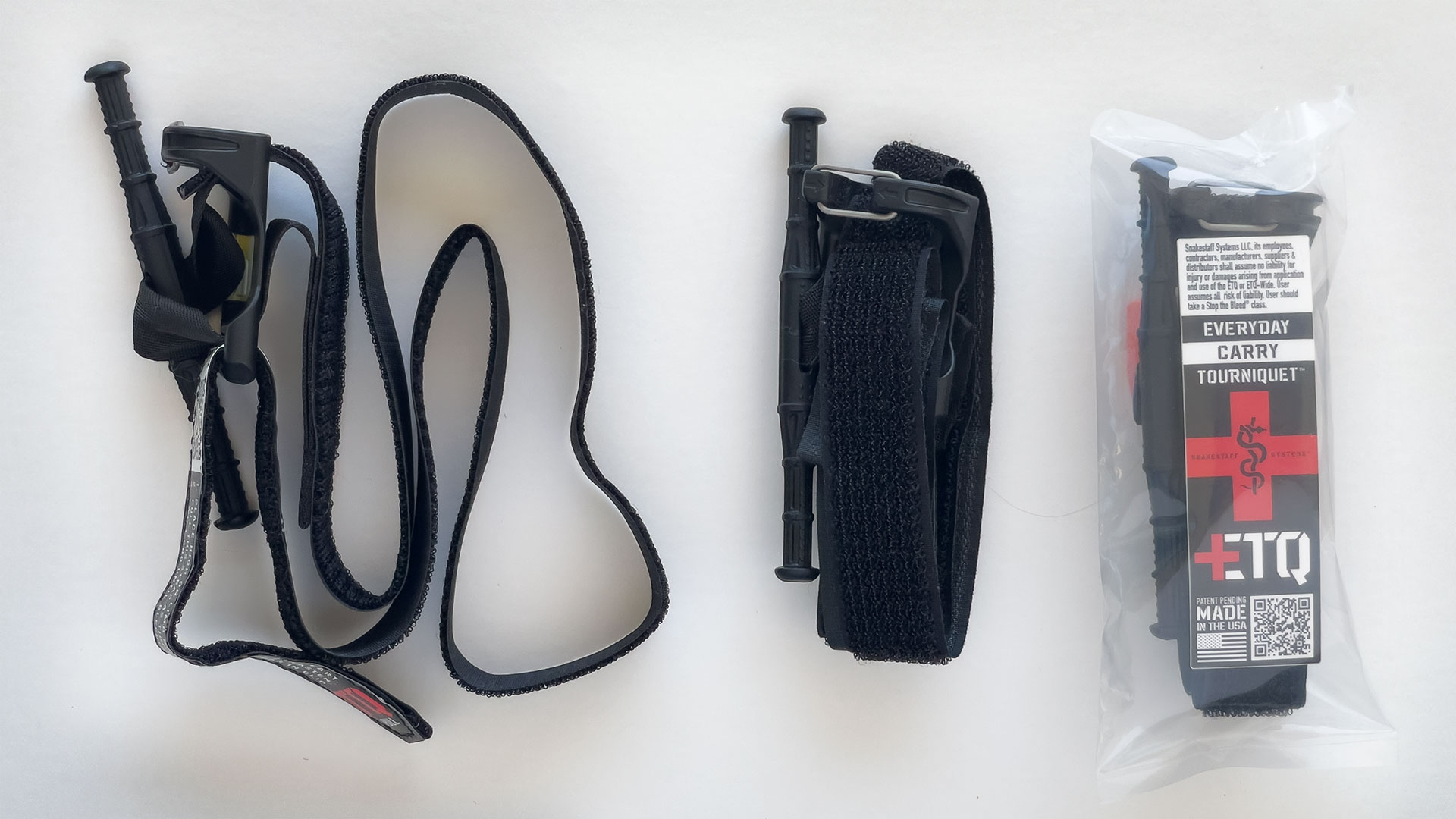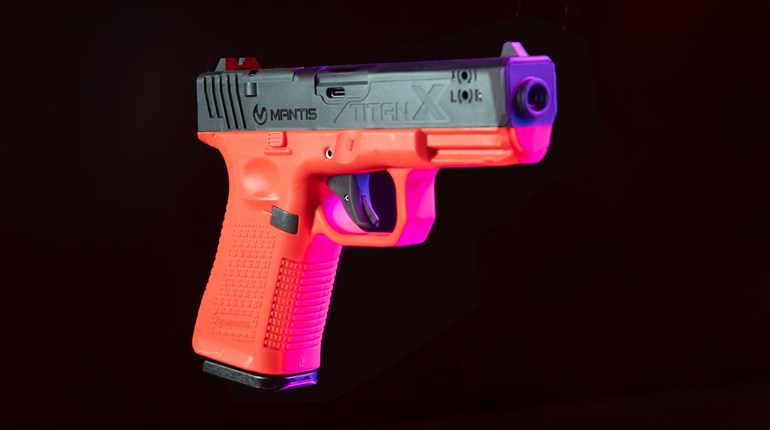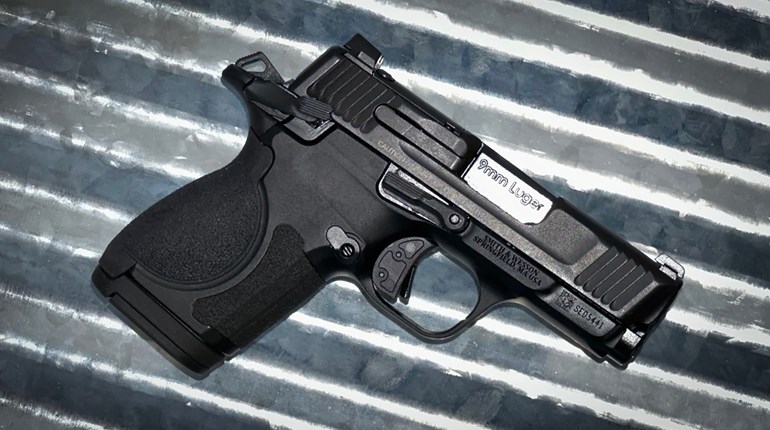
Many years ago, I posted in an online gun forum that in addition to my defensive sidearm, I had started to carry a tourniquet and other first aid gear with me on a regular basis. The reaction from pretty much everyone in the forum was “Why would you want to apply first aid to the guy you just shot?” They all imagined that the only person who might ever need emergency trauma care would be the person who attacked me with lethal force. The idea that I might need to apply first aid to myself or a loved one after the bullets stopped flying never entered their head. More than that, there are so many other medical emergencies where a tourniquet might come in very handy, such as traffic accidents, falls and all sorts of other mayhem, it just makes sense to have trauma gear just as close to you as your defensive pistol is.
Which can be a bit of a problem. There are many companies who offer holsters to keep your pistol out of sight, but the list of companies who make first aid gear you can carry discreetly is quite short. Worse still, a good percentage of the solutions they have involve carrying everything in an ankle pack of some sort. This may work well in northern climes, but I live in Florida, where shorts are the order of the day.
This is what makes the ETQ (Everyday Carry Tourniquet) from Snakestaff Systems so interesting. It has all the features you want in a rapid application tourniquet, such as a hook and loop backing for fast application, a windlass to occlude the blood flow and a carabiner to secure the windlass once sufficiently tightened. However, unlike other tourniquets with similar features, the ETQ is very easy to conceal. Setup for fast deployment (more on that later), it easily fits into a double stack magazine pouch. This means that if you can carry a spare magazine, you can carry a tourniquet, giving you other life-saving options than just sending rounds downrange.
The ETQ is 37 inches long by 1 inch wide and weighs less than two ounces. It has a sturdy polymer windlass and a polymer carabiner that locks the windlass in place. There is also a small chemlight on the carabiner that will glow when activated, allowing you to locate the tourniquet in low light situations. As a nice added touch, there is a QR code on the loop that will direct you to a video on how to apply the tourniquet, a useful thing for inexperienced people to have when everything is falling to pieces.
Thin Is In

The width of the ETQ is one of the features that allow it to be carried in a double stack 9mm pouch. Other tourniquets in common use are wider than that, about 1.5 inches across, and are harder to conceal. For example, before I started carrying an ETQ, I’d have an SOF-T tourniquet with me, carried in a Blue Force Gear Ten Speed M4 pouch. It worked, but it was much larger than a spare pistol magazine and therefore a bit bulky to carry and awkward to conceal.
Let’s talk a minute about how to carry a tourniquet. Most tourniquets are set up from the factory with the hook and loop fasteners wound tight against each other and the loop closed up as tight as possible, creating a small, compact package. This works great for shipping, as the loop doesn’t unroll in transit, but it drastically slows down deployment times. As a result, it’s advisable to “stage” any tourniquet meant for immediate use, and expand the loop as far as you can so it’s easier to slip the tourniquet onto the affected limb.
 The thinness of the ETQ definitely makes it easier to carry, but having a tourniquet with you does you little good if the tourniquet can’t stop blood flow to the injured limb. Based on my limited testing (I have training in CPR and trauma response, but i am not an EMT or a medical professional), the ETQ dropped my pulse at the wrist to zero when it was fastened tight, which is what you want in this sort of thing. I have not done more extensive testing using a pulse oximeter, so be sure to do your own testing before making the decision to carry any tourniquet.
The thinness of the ETQ definitely makes it easier to carry, but having a tourniquet with you does you little good if the tourniquet can’t stop blood flow to the injured limb. Based on my limited testing (I have training in CPR and trauma response, but i am not an EMT or a medical professional), the ETQ dropped my pulse at the wrist to zero when it was fastened tight, which is what you want in this sort of thing. I have not done more extensive testing using a pulse oximeter, so be sure to do your own testing before making the decision to carry any tourniquet.
Speaking of testing, some of the tourniquets on the market are “TCCC-approved.” This means they have been deemed fit for battlefield use by Tactical Combat Casualty Care, a branch of the Department of Defense which approves the techniques and gear used to save lives on the battlefield. The ETQ has not been approved by the TCCC, but that doesn’t mean it’s incapable of saving a life. After all, people’s lives are saved each year by improvised tourniquets made from belts and neckties, and the ETQ looks to be much, more more effective than something improvised in the heat of the moment.
If you’ve realized, as I did, that protecting what’s important to you means making sure they survive a traumatic injury but you’re not sure if you can carry a full IFAK on you without raising a lot of eyebrows, check out the ETQ, and think of the $32 you’ll spend (plus shipping, etc) as an investment in your or a loved one’s future, or rather, think of it as an investment that will help them have a future.





































